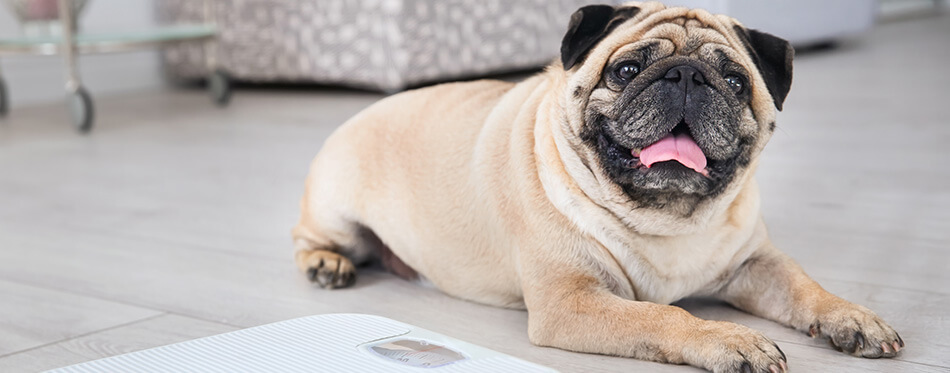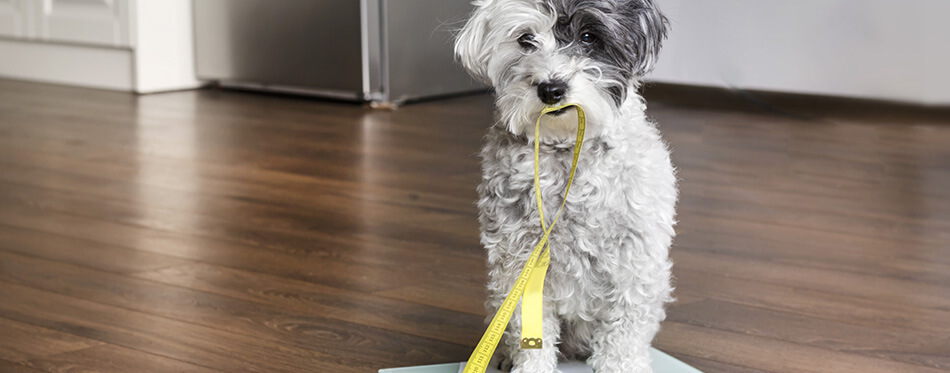Monitoring your dog’s weight is a crucial part of their development, especially in the early stages. Checking how much your dog weighs on a regular basis helps you to know whether or not they are growing properly and whether you need to make changes to their diet or exercise routine to maintain a healthy weight. Unfortunately, not everyone has the time or means to take their dog regularly to the vet to check that they’re the correct weight. This is why we’ve put together this handy guide to explain how pet owners could go about the weighing process at home to make matters much simpler.
Why is it Important to Weigh Your Dog?
There are several reasons why you might need to weigh your dog, one of which we touched on in the introduction. But let’s just take a quick look at the main reasons as to why monitoring your dog’s weight is so important:
Early Age Development
Whether you own a small dog or a large dog they all develop rapidly during those early stages, growing to full maturity between the ages of 1-2 years. However, smaller dog breeds don’t have as far to grow and so they are less likely to be underweight whilst they are young.
Whereas large dog breeds do have a lot of growth to go through in a very short space of time. So much so that if a large breed puppy is not receiving the correct amount of calories or nutrition in the first six months they can develop deformities that can prevent them from standing straight. Such as when the tightened ligaments stop growing as the skeleton lengthens around them, forcing their feet to tuck under (a rectifiable condition known as knuckling).
To Monitor Health Conditions
If you are aware that your dog has a health condition or illness which can keep them from maintaining that ideal weight, then knowing how to measure their weight at home can reduce stress and anxiety. This, in turn, helps to keep your dog more comfortable at the same time and can have a significant impact on their mental health. Especially if your dog has grown anxious at the prospect of a checkup, which is common in dogs with long-term health problems.
Obesity or Malnutrition
Both obesity and malnutrition are at opposite ends of the same scale and both need to be monitored closely. A dog being overweight can restrict their ability to exercise and lead to mobility problems as well as the development of arthritis or knee/hip dysplasia. On the other end of the scale, a dog falling well below the ideal weight limits can also experience skeletal issues as well as digestive problems, stomach issues, heart complications, and breathing difficulties to name a few.
Most vets will be able to advise you on the best diet to rectify these issues, and by weighing your dog at home you can more easily keep track of their progress.
To Recognize Health Problems
Not only does weighing your dog regularly help you to monitor health conditions that you are already aware of, but it can also be instrumental in recognizing when there’s a problem. If your dog doesn’t appear to have an appetite, be sure to check their weight and see whether or not it’s being impacted. If so this could be a sign that something isn’t right, therefore you should try to book an appointment with your veterinarian to have your dog looked over.

How Often Should I Weigh My Dog?
Whilst your dog is growing (especially with larger breeds) it is worth weighing them once a week if possible. Or at the very least once a month. Though you always have the option to weigh them more frequently if you think there is cause for concern.
Once they have fully matured the need to weigh your dog reduces dramatically (again, unless you feel there is cause for concern). You should aim to get your dog on the scales around once every six months, and if they are happily sticking to the same weight then you can even stretch it to once a year unless you have cause to check it in the meantime.
What Weight Should My Dog Be?
Different dogs have different weight limits, even mixed-breed dogs! Though mixed breeds do have less defined weight parameters, there are still have recommended weights depending on the breeds they are crossed between. There is no standard weight for any dog, so before bringing your pup home you need to familiarize yourself with their sizing so that there are no bad surprises.
Different Ways To Weigh Your Dog At Home
Not everyone has access to a dog scale as they can be very expensive and take up quite a lot of room. Therefore you should consider using a different scale to work out your dog’s weight. the most commonly used design is a bathroom scale, but it is also possible to use a baby scale for smaller dogs if you have one available.
The scales you use, so long as they are a flat surface, have full power, and are consistent in their measurements, don’t really matter too much. It’s more important that you figure out the best method for getting them weighed accurately.
Simple Steps For How To Weigh a Dog
Try to keep these steps in mind when weighing your dog in order to get the best result.
Keep Hold of Them When They Are Small Puppies
Until they are able to learn to stay put it is best to weigh your pup whilst they’re in your arms. This is done by weighing yourself first, not holding the puppy. Then pick them up and check the total weight – be sure to hold them securely as you don’t want to risk them jumping out of your arms.
You can then minus your original weight from the combined weight total to work out the difference. That difference is how much your puppy weighs.
Teach Them to Sit or Stand Still on Command
As soon as possible you will want to try and teach your dog a simple command that can keep still in one spot for a few seconds and prevent them from trying to wander away whilst you’re weighing them. Something like sit, stand or lie down. The most effective training methods for teaching these types of commands tend to be a combination of positive reinforcement and clicker training.
Puppies will always react well to positive reinforcement, be it in the form of a treat or a fuss, and when combined with clicker training you are able to create a positive association with the sound, meaning they are more likely to respond to the command.
Stick to The Same Scales
Different scales tend to show slightly different readings. If you’re wanting to make sure your pet’s weight is accurate with every weigh-in then try to stick to the same home scales to ensure you’re always getting the right weight reading (this means a reading that is in line with the previous one).
Stick to The Same Time of Day
When you have your pet weighed you should always keep to the same time of day. This could be either first thing in the morning with an empty stomach, or at the end of the day after they’ve had their food. Most pets are easier to weigh first thing as the amount they eat throughout the day may vary, therefore varying the results.
Keep Your Vet Updated Once a Month
When your dog is young and being weighed at regular intervals you should try to keep your vet informed of their weight around once a month so that they can update their records. This will also help them to notice any fluctuations that may be of concern that you might have missed.

When to Ask The Vet For Additional Advice
As a final note, and to be on the safe side, try to keep an eye out for the following warning signs when weighing your dog:
- Sudden drop in weight
- Sudden rise in weight
- Reduced appetite
- A dry coat or loss of fur
These could all be signs of something else going on that might require the attention of your vet. It can sometimes be something as simple as an under or overactive thyroid, or food or environmental allergies. But there is also every possibility that the shift in weight and appetite could be indicating something more severe. Better to be safe than sorry!

